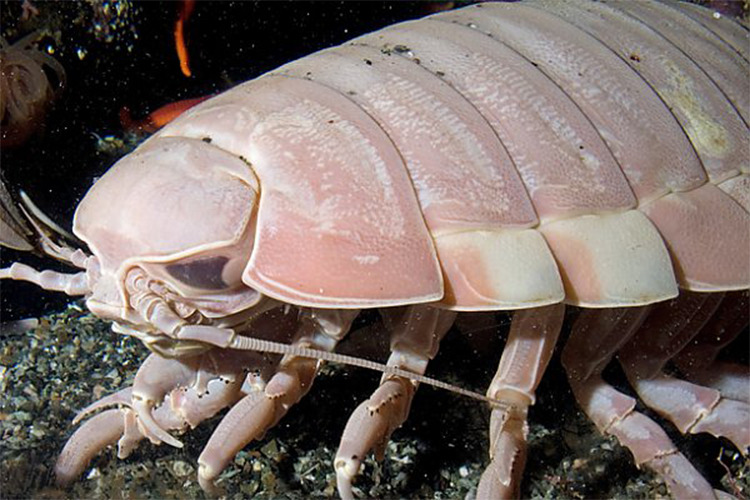
Picture of newly discovered bathynomus yucatanensis in the Gulf of Mexico. photo by Perry Hampton
With only a month left in 2022, here are some of the exciting new creatures scientists have found this year.
Ocean takes up 71% of Earth’s surface. Being wide and vast, they support life to what scientists believe could be over a million sea creatures. Being one of the most diverse biomes in the world, between 1,000 and 1,500 marine animals are discovered every year. However, only an estimated 5% of Earth’s oceans have been explored by humans, and remain some of the greatest mysteries of the world.
This year has been very successful for marine biologists. Scientists have identified many different aquatic animals and renamed misclassified animals to their respective species. Some popular species discovered this year were the Bathynomus yucatanensis, the Cirrhilabrus finifenmaa (rose-veiled fairy wasse), and the kentridontid and squalodelphinid dolphins.
The most popular aquatic species discovered this year was the Bathynomus yucatanensis, a species of giant isopods that is a crustacean (a distant cousin of crabs). There are 20 different species of giant isopods, which can grow as long as 16 inches and weigh an average of 3.7 pounds. The Bathynomus yucatanensis can grow to about 10 inches long. It was discovered only four months ago in August, and there is not much information on the creature yet. Scientists have learned they are bottom dwellers and scavenge the ocean floor for food. They have 14 swimming limbs (also used for respiration), commonly live in tropical areas, and can live up to 1,600 feet below the ocean surface. The species was discovered in the Gulf of Mexico by Japanese, Australian, and Taiwanese researchers.
Another species recently discovered was the Cirrhilabrus finifenmaa, also known as the rose-veiled fairy wrasse, named after the national flower of the Maldives. The rose-veiled fairy is a species of wrasse, a colorful family of fish with over 500 species and nine sub-groups. Wrasses generally live in tropical and subtropical waters such as the Pacific, Atlantic, and Indian oceans. The rose-veiled fairy wrasse was discovered in March in the oceanic twilight zones near the Maldives. Since the wrasse is a highly diverse family of fish, the rose-veiled fairy was mistaken for the red-velvet fairy wrasse because of their similar colors since the 1990s and has only now been correctly named.
Meanwhile, one discovery in Switzerland has solved the mystery of an unknown extinct sea creature whose fossils have puzzled scientists for years. About 20 million years ago, what is now Switzerland was known as the Swiss Plateau region. As the sea warmed, ocean levels rose and flooded the Swiss Plateau. During that era, it was populated by sharks, dolphins, sea urchins, and more. Millions of years later, when the sea levels retreated, the fossils of the species existing there remained. Scientists have been curious about fossils from this era for years. And after examining 300 different fossils of dolphins and whales from waters near Switzerland and comparing them to fossils from the Swiss Plateau region, they were able to name two new species from these bones: the kentriodontid dolphin and the squalodelphinid dolphin. Using the fossils, researchers created 3D replicas of the dolphins’ ears, helping to understand their hearing abilities. Through this, they also discovered they are distinctly related to sperm whales. The discovery is a big accomplishment for Swiss scientists as the dolphins have been unknown for years.
Thousands of aquatic species are discovered each year, which may seem insignificant to humanity’s knowledge of the oceans. However, every discovery is important to marine biologists and researchers. When a new species is found, scientists learn more about how ocean ecosystems work. The ocean has the richest history on the planet, since millions of years ago, life only existed in water. Discovering life in oceans is just as important as finding new species existing on land. The species found this year are small steps toward understanding Earth’s Waters.